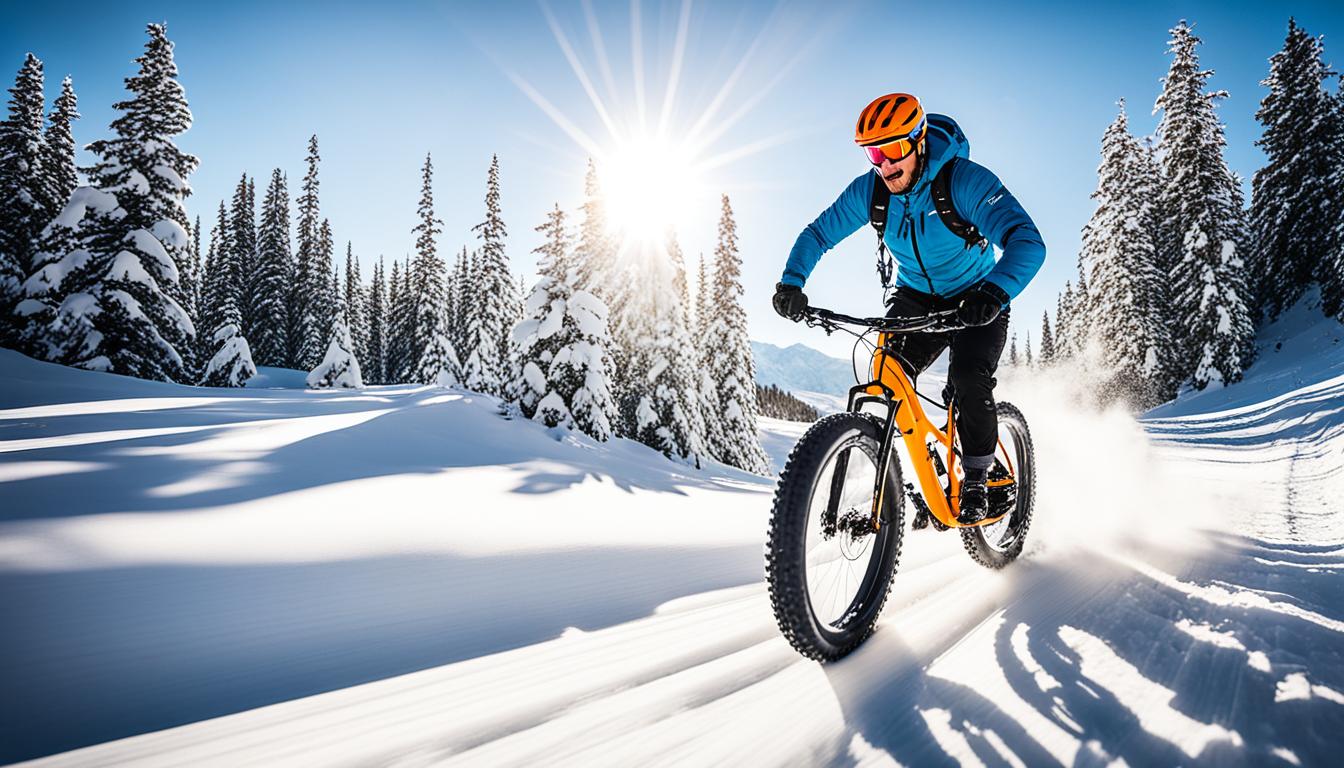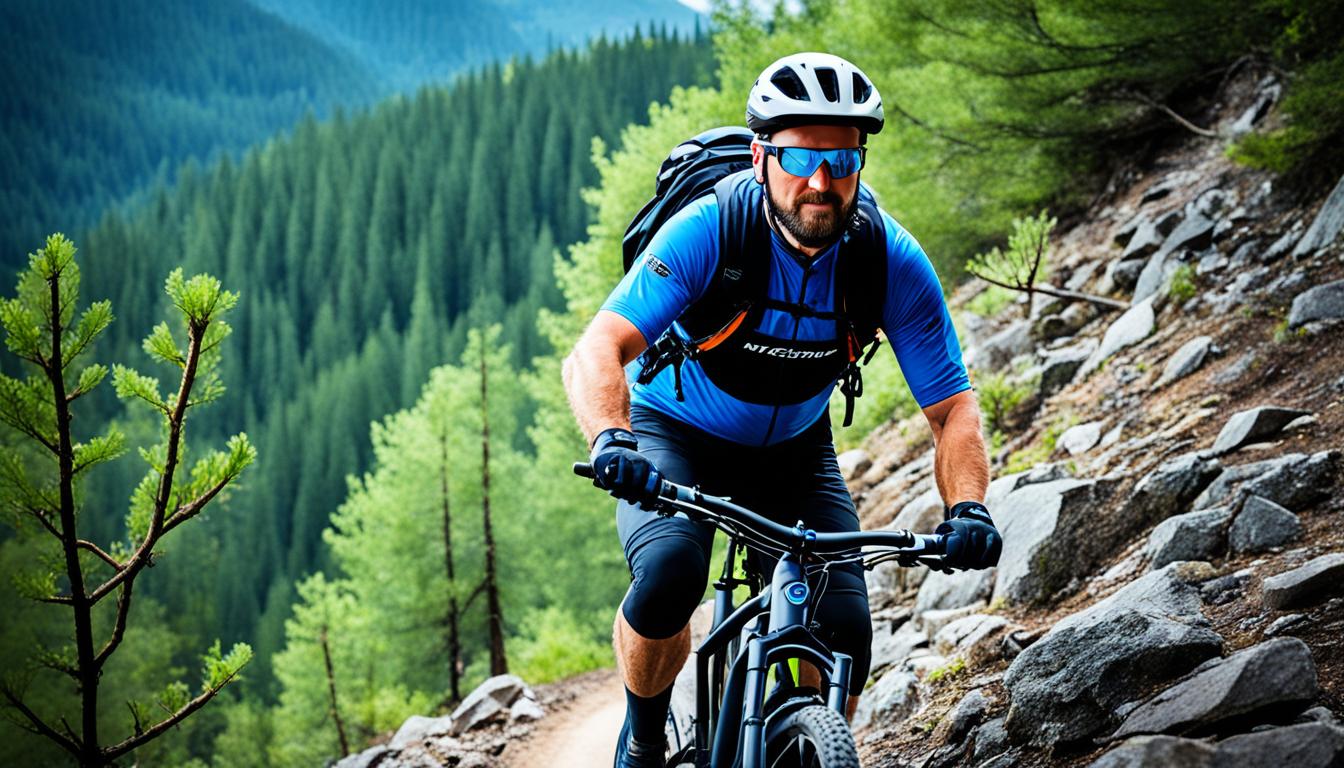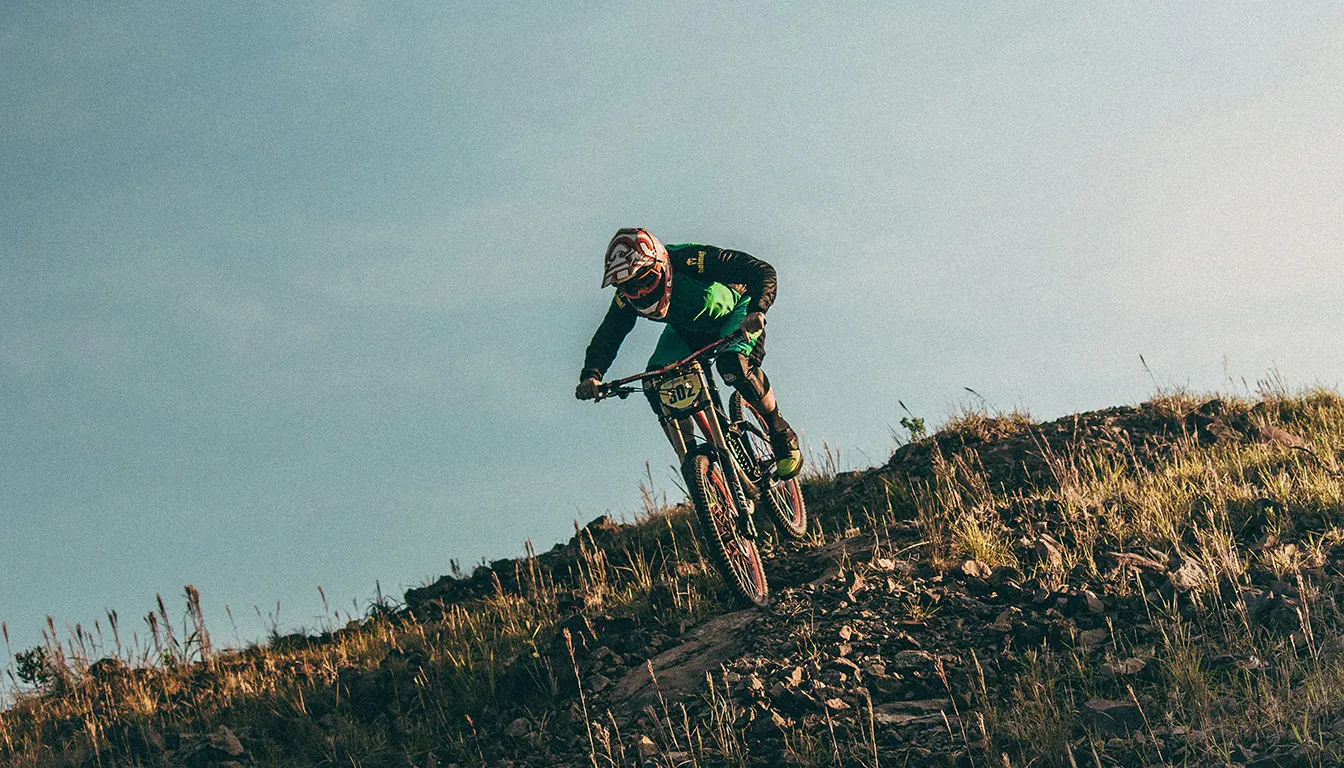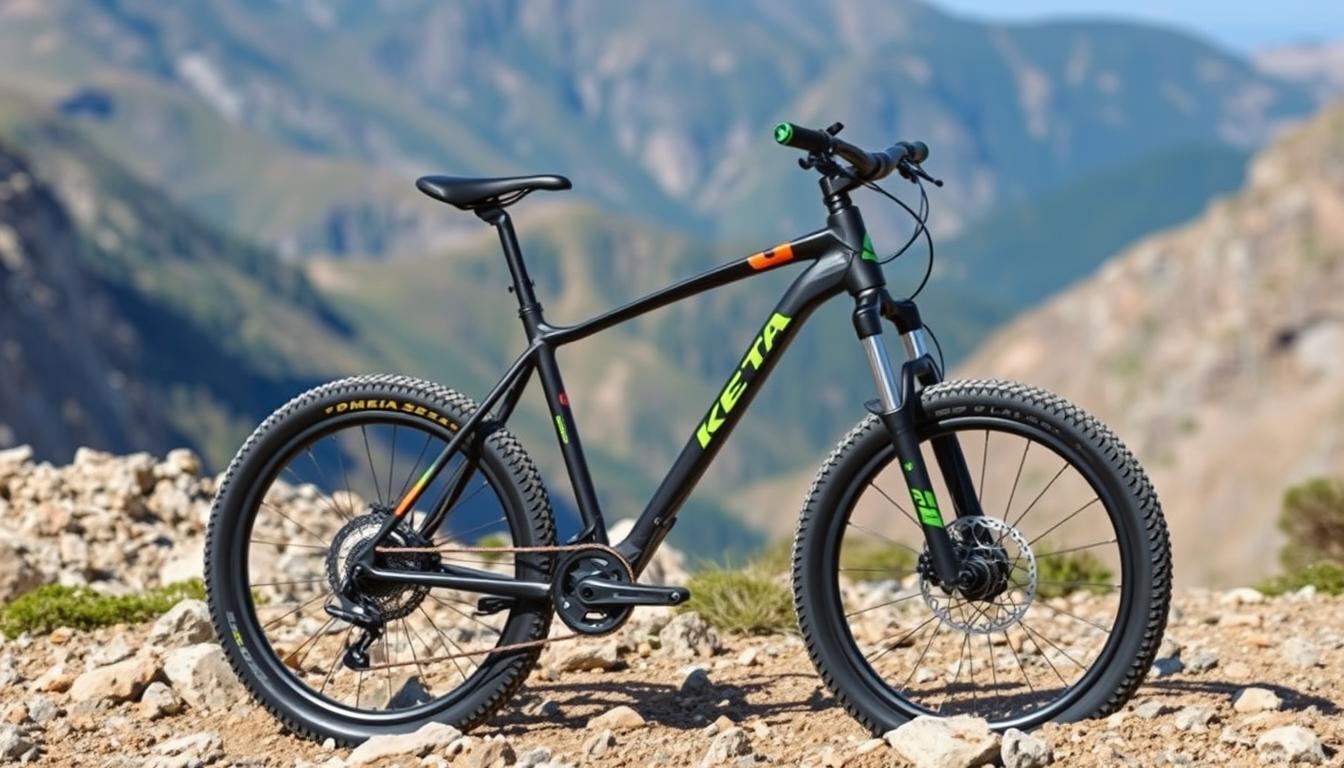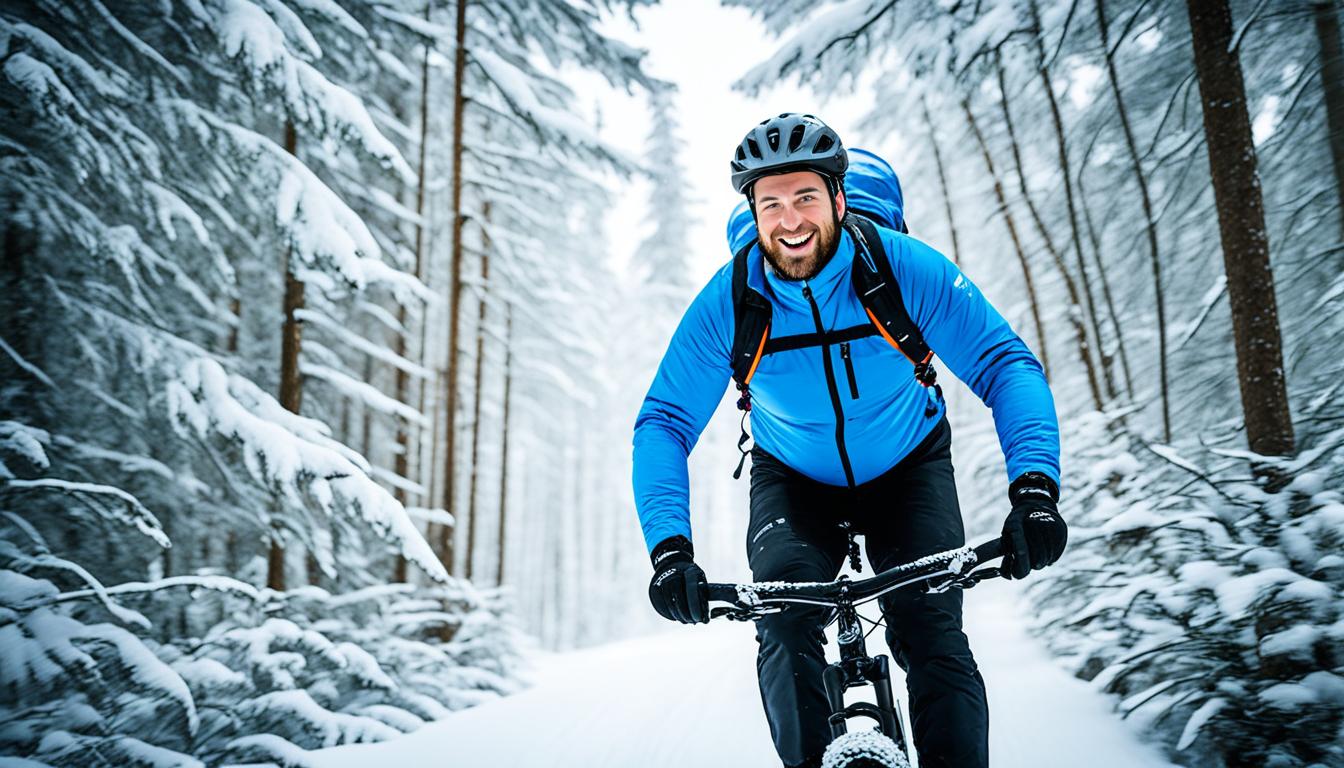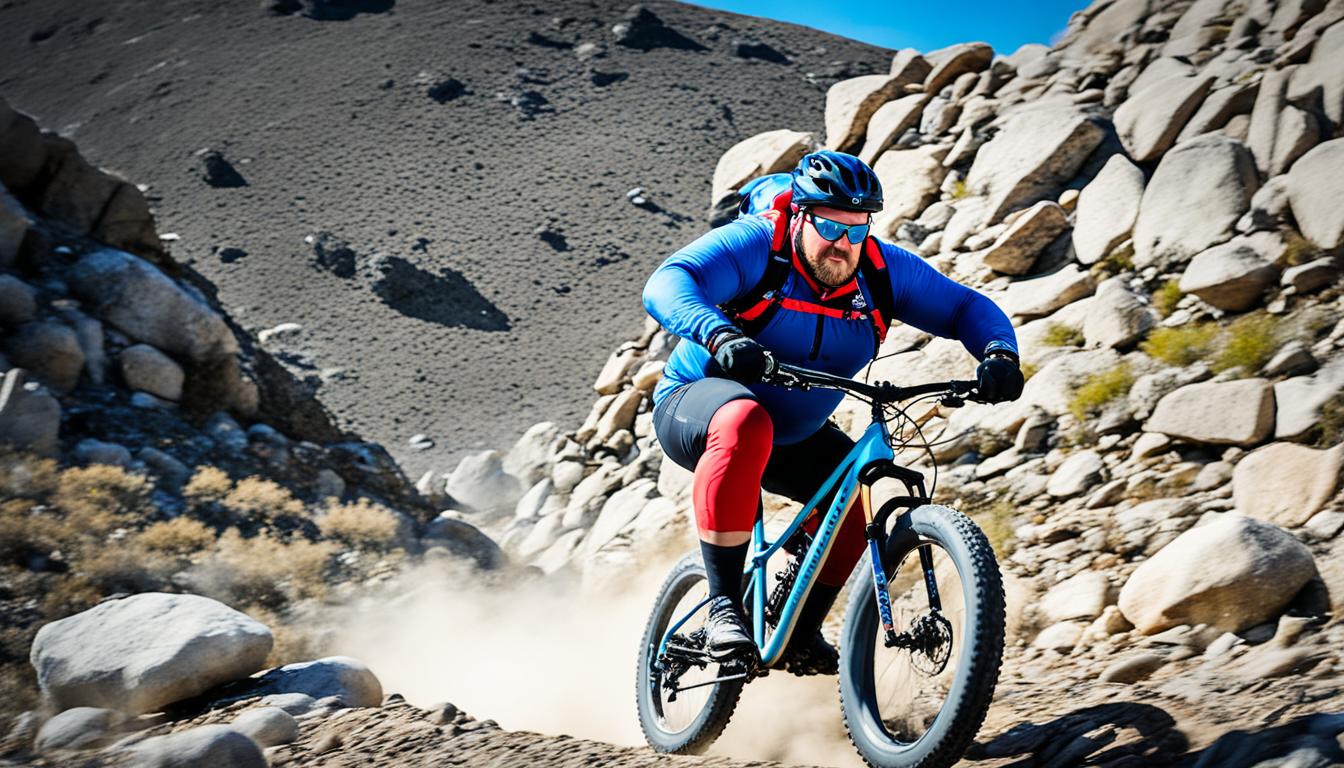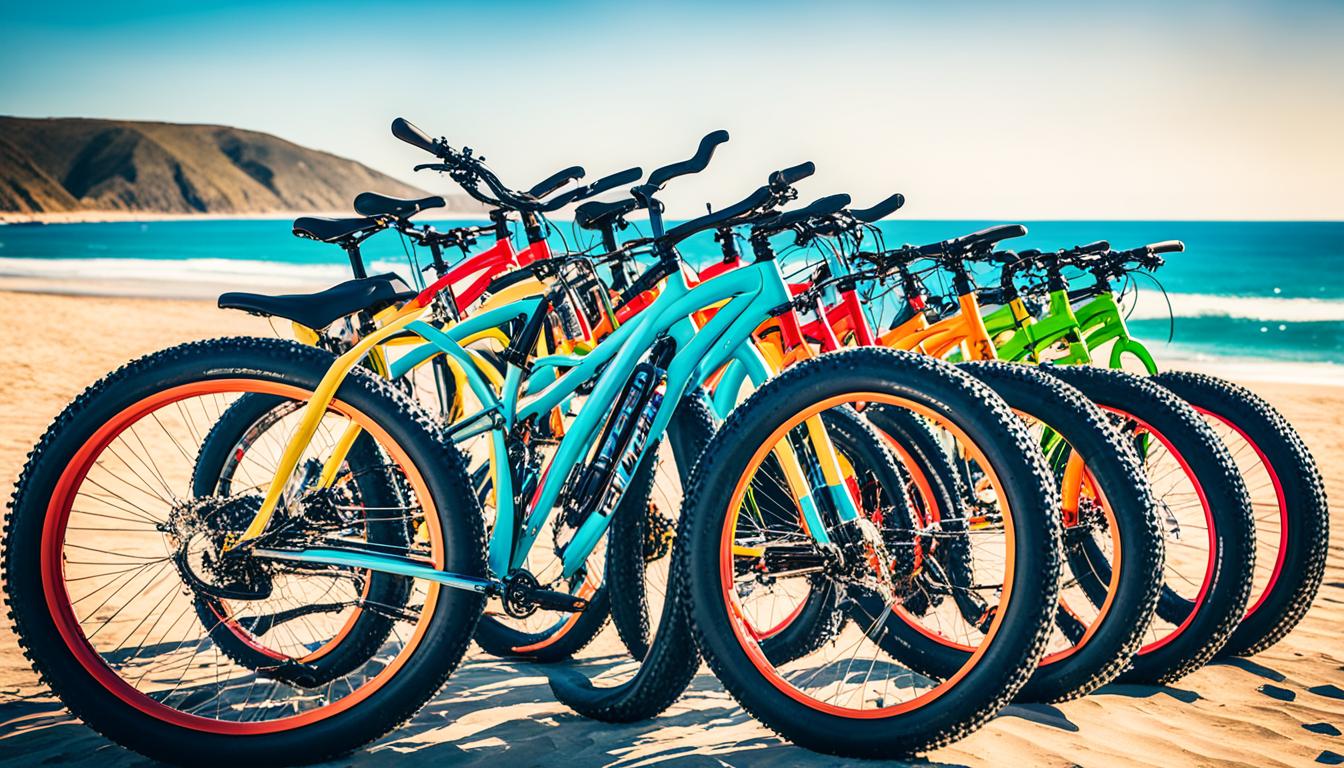Riding a fat bike in the snow is getting more popular. It lets cyclists enjoy their hobby even during winter. Fat bikes are designed for snowy trails, offering fun all year round. To ride well in winter, you need the right gear and skills. These help you stay balanced on slippery paths.
We will share key tips for fat biking in winter. This guide will help you get ready for your snowy adventures. Learn about fat bikes, select the right gear, and master riding techniques. You’ll be set to take on snow-covered trails. For more on mountain biking, check out this article.
Understanding the Fat Bike
Fat bikes have become very popular recently. They are now the favourite for those looking to ride in winter landscapes. We will look at what fat bikes are and what makes them special. This includes their benefits for cycling in snowy conditions.
What is a Fat Bike?
A fat bike is a bike with really big tires, over 4.5 inches wide. These tires let the bike move well on soft ground because they can be used at low pressures, between 3 to 8 psi. This makes fat bikes perfect for snow, sand, and mud, unlike regular bikes.
Most fat bikes are quite light, about 25 lbs, and are made from strong materials like carbon, titanium, and steel. They’re designed smartly, with small gears for climbing hills. This makes riding comfortable and stable.
Benefits of Riding a Fat Bike in Snow
Riding a fat bike in snow comes with lots of perks. It’s an exciting way to cycle in winter, offering good control on different types of snow. You can go through flat snowy areas and tough trails too.
They give great stability and help you float over snow rather than sink. The grip is also better. Riding in winter opens up new places to cycle, making it an adventure.
Essential Gear for Riding in Snow
Riding in snow needs the right gear for fun and safety. Focus on clothing and footwear to deal with winter. These tips will help you stay comfortable and perform well on the trails.
Clothing Recommendations
Layering is key for staying warm and comfortable. Follow this guide:
- Base Layer: Choose lightweight, breathable materials like fleece or wool. They keep moisture away from your skin.
- Mid Layer: An insulating layer, such as a fleece jacket, keeps you warm.
- Outer Layer: A wind-resistant jacket protects you from cold winds when you go downhill.
For top choices, look at brands famous for winter cycling clothes. Assos is great for bib tights, and the GoLite Pinnacle jacket is a good light outer layer. Choosing the right clothes makes fat biking in cold weather better.
Footwear and Accessories
The right footwear keeps your feet warm and steady. Think about buying:
- Winter-specific Mountain Bike Shoes: The 45NRTH Wolvhammer boots offer insulation and keep water out. They cost $325.
- Alternative Footwear: At $130, The NorthFace Chilkat boots are less expensive and keep your feet warm.
Accessories are also crucial for comfort in snow. You should have:
- Pogies: Try Dogwood Designs Poagies at about $135 or 45NRTH Cobrafist pogies for around $115 to keep hands warm.
- Gloves: Choose gloves that offer warmth without being too bulky.
- Headgear: A good hat is important to keep your ears warm during rides.
- Legwear: Goretex ski pants work well against the wet and cold.
Selecting the best gear helps you do better on trails. It makes sure you stay warm and enjoy your winter rides.
How to Ride in Snow with a Fat Bike
Riding in snow is a unique challenge. It requires adjusting both equipment and riding style. This enhances safety and fun on trails. Let’s explore some key fat bike techniques for snowy conditions:
Adjust Your Tyre Pressure
Adjusting tyre pressure is key in winter. Lowering it improves traction and reduces resistance on snow. Keeping it between 4-10 psi allows tires to grip better and absorb bumps.
Ride with Flat Pedals
Flat pedals offer major benefits in winter. They allow for quick dismounts on slippery terrain. This saves energy and aids in balance, making snow riding more controlled.
Focus on Cadence and Technique
Keeping a steady cadence is crucial on snow. Avoiding too much force prevents wheel spin. Practising a smooth pace aids in power delivery, especially uphill. For deeper insights, read this guide on fat bike riding.
Impact of Trail Conditions on Riding
Understanding how trail conditions for fat biking affect your ride is key to enjoying it. Different settings offer unique challenges and chances, especially riding in frozen conditions. We’ll look at how these impact your riding safety and performance across snowy landscapes.
Riding on Frozen Ground
Riding on frozen ground gives a firm surface, making your ride better. Trails become solid when frozen, reducing rut formation, especially in muddy areas. To keep performance high, ride early in the morning before the sun warms the ground. For icy paths, studded tyres are essential. They improve grip and handling, boosting safety in tough spots.
Handling Different Snow Types
Knowing the snow types for fat bikes is crucial. Fresh powder, while beautiful, makes riding hard and slows you down. Packed snow, however, offers a fast and smooth ride. Riding on crusty snow demands keeping momentum. Stopping suddenly can make it hard to start again.
Enjoying rides in places like Cairngorms National Park or the Lake District depends a lot on snow type. For more on winter fat biking, look up popular routes and conditions.
Best Practices for Winter Fat Biking
Riding a fat bike in winter requires knowing some key tips. Being well-prepared makes the ride both safe and fun. It’s important to stay hydrated and check the weather.
Stay Hydrated
It’s vital to drink plenty of water, even in cold weather. Cyclists often forget because it’s not hot. Using an insulated bottle or hydration pack helps you drink regularly. This keeps energy up and body temperature steady. Paying attention to water intake improves your riding experience.
Mind the Weather
Checking the weather is crucial for fat biking plans. Knowing the current and upcoming conditions helps you prepare. Be ready for sudden weather shifts, as they can change the trails. With the right gear and approach, your ride will be safer and more enjoyable.
Conclusion
In wrapping up our look at winter fat biking, it’s clear that the right gear, skill, and trail knowledge can make it great. Fat biking in the winter shows us that the cold months don’t have to stop our biking fun. It invites us into a thrilling world of snowy landscapes, building a strong cycling community.
Riding a fat bike in the snow means facing winter’s challenges head-on. Adjusting tyre pressure and choosing good trails help you enjoy it more. And when you head out, keep safe and considerate of others sharing the trails.
So, get ready, welcome the cold, and set off to discover snowy paths. The thrill of new trails and friendship with other fat bikers make winter rides unforgettable. Dive into winter fat biking and start your adventure! For tips to help beginners, check out this essential guide.
FAQ
What are the key benefits of riding a fat bike in snowy conditions?
Riding a fat bike in snow provides superb grip and stability. This lets you explore winter trails with ease. It also makes cycling possible all year and brings unique adventures in the snow.
How do I adjust tyre pressure for winter riding?
Lower tyre pressure below 10 psi for best performance on snow. This increases the tyre’s contact area and improves grip. Soft tyres adjust better to snowy surfaces.
What type of clothing should I wear while fat biking in snow?
Choosing the right winter cycling clothes is key. Start with layers that wick away moisture. Add fleece or wool for warmth and a wind-resistant jacket for protection. Look for brands like Assos for bib tights and the GoLite Pinnacle jacket for maximum comfort.
Why should I use flat pedals instead of clipless pedals in snow?
Flat pedals make getting off your bike in snow easier. They help keep balance and save energy when you slip or need to navigate turns.
How can weather affect my fat biking experience?
Weather changes can significantly affect trail conditions and how your ride feels. Stay updated on the weather to prepare for shifts that could change the snow.
What are the best practices for staying hydrated while cycling in cold weather?
Staying hydrated in the cold is crucial. Drink water often before and during your ride. Use hydration packs or insulated bottles to keep drinking.
How do I handle different types of snow while fat biking?
Fresh powder can slow you down, but packed snow makes for a smooth ride. Navigate crusty snow with care to keep your momentum. Stopping suddenly on it can make restarting difficult.
Is riding on frozen ground safe?
Riding on frozen ground is usually safe and stable, especially when it’s still hard early in the morning. For extra safety on ice, consider studded tyres to improve traction.
